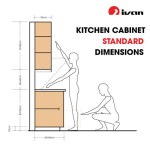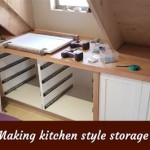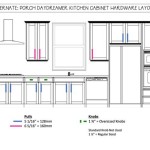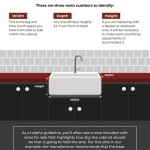What Is Bulkhead Above Kitchen Cabinets?
The term "bulkhead" in home construction refers to a structural element that serves as a barrier or partition. In the context of kitchens, a bulkhead above kitchen cabinets is a horizontal, often decorative, panel that extends from the top of the cabinets to the ceiling. This panel can be made from various materials like wood, drywall, or even a combination of different materials. It is essentially an extended wall that fills the space above the kitchen cabinets, creating a finished and polished look.
Benefits of a Bulkhead Above Kitchen Cabinets
While primarily aesthetic, a bulkhead above kitchen cabinets offers several benefits beyond purely decorative purposes:
1. Enhanced Functionality: The bulkhead can provide extra storage space, especially if it is designed with built-in shelves or compartments. This is particularly useful for storing items that are not frequently used, freeing up valuable cabinet space below.
2. Space Optimization: By bridging the gap between the cabinets and the ceiling, the bulkhead can visually unify the kitchen space, creating a more cohesive and less cluttered appearance. This is especially advantageous in smaller kitchens where every inch of space matters.
3. Architectural Interest: With its unique horizontal line, the bulkhead can add visual interest to the kitchen and become a focal point. It can also be used to define different areas within the kitchen, such as a breakfast nook or a work zone.
4. Concealed Plumbing or Electrical: The bulkhead can discreetly house exposed plumbing or electrical wiring, hiding them from view and improving the overall aesthetic appeal of the kitchen. It can also provide a clean and organized solution for running electrical cords for lighting or appliances.
5. Sound Insulation: In open-plan kitchens, a bulkhead can help to reduce noise transfer between the kitchen and other living spaces. This is particularly beneficial if the kitchen is frequently used for cooking or entertaining.
Types of Bulkhead Materials
The choice of material for the bulkhead depends on the desired aesthetic and budget. Some common options include:
1. Wood: This is a classic choice for bulkheads, offering warmth and durability. Wood panels can be painted, stained, or left natural to match the kitchen's existing décor. Popular wood choices include cherry, maple, oak, and pine.
2. Drywall: This affordable and versatile material is easy to install and can be painted or textured to match the rest of the kitchen. Drywall is also a good sound insulator.
3. Medium-Density Fiberboard (MDF): MDF is a cost-effective alternative to wood that is smooth and can be easily painted. It is an excellent choice for creating detailed designs.
4. Metal: Stainless steel or brushed aluminum bulkheads offer a modern and sophisticated touch, especially in contemporary kitchens. They are also easy to clean and maintain.
Considerations for Designing a Bulkhead
Before embarking on the design of a bulkhead, consider several factors:
1. Kitchen Style: The bulkhead should complement the overall style of the kitchen. A traditional kitchen might favor a wood bulkhead, while a modern kitchen could opt for a sleek metal or painted drywall design.
2. Ceiling Height: A bulkhead can make a low ceiling feel even lower. If your kitchen has low ceilings, consider a bulkhead that is minimal in height or features a slanted design.
3. Lighting: Incorporate lighting into the bulkhead design to highlight the kitchen's features and create a warm and inviting ambiance. Recessed lights, LED strips, or pendant lights can be integrated into the bulkhead.
4. Functionality: If you plan to utilize the bulkhead for additional storage, plan the layout of shelves or compartments carefully. Ensure that they are accessible and functional.
5. Budget: The cost of a bulkhead can vary depending on the materials used, the complexity of the design, and the labor involved. Set a budget beforehand to keep the project within your financial limitations.
A bulkhead above kitchen cabinets is a versatile design element that can enhance both the functionality and aesthetics of your kitchen. By carefully considering the design, materials, and functionality, you can create a bulkhead that perfectly complements your kitchen's style and your personal needs.
/102333281-f5b5b730e6bd4fa8a55937a4ab4cc97a.jpg?strip=all)
Your Guide To Building A Soffit For Kitchen Cabinets

What Is A Bulkhead Mojo Homes

What Is A Bulkhead Brighton Homes

Benefits Of Adding A Bulkhead To Your Kitchen Cabints

What Is A Bulkhead Why Do I Need One

How To Enclose The Space Above Kitchen Cabinets Angela Marie Made

What Is A Bulkhead Mojo Homes

Monday Inspiration A Pretty Kitchen Renovation Cottage And Vine

Benefits Of Adding A Bulkhead To Your Kitchen Cabints

What Is A Bulkhead In Kitchen 2025 Specifier
Related Posts








